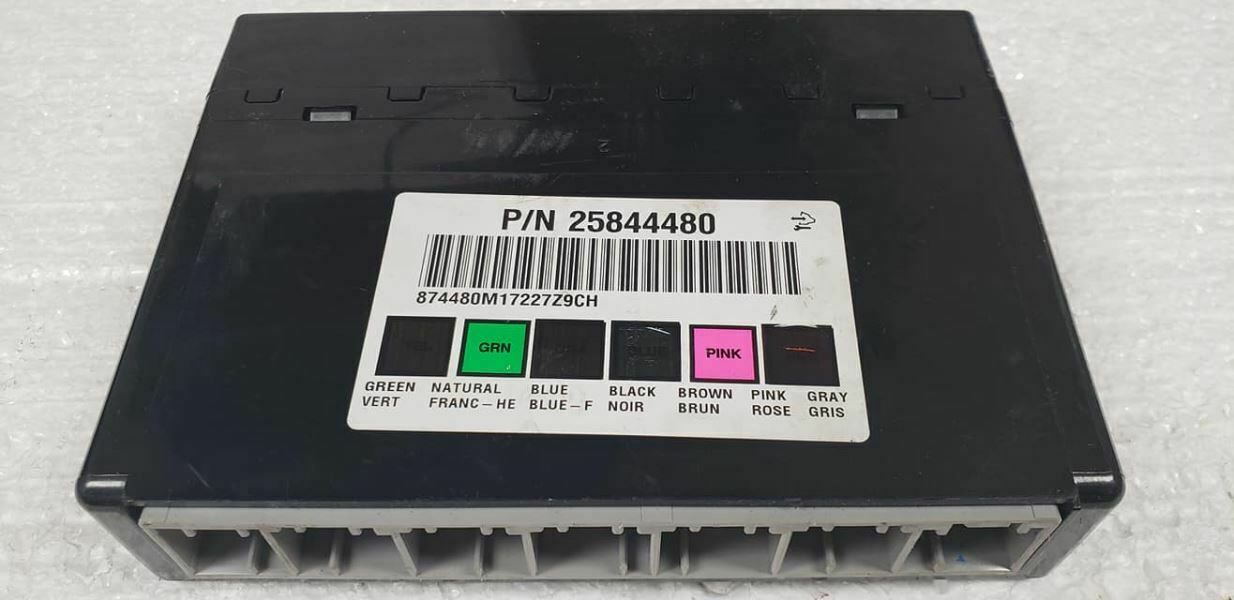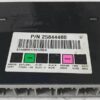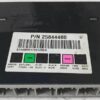Restore Full Functionality to Your GM Truck or SUV
Are you dealing with frustrating electrical issues in your truck? Unpredictable power windows, a malfunctioning HVAC system, or random warning lights can make your reliable workhorse feel untrustworthy. This VIN-programmed Body Control Module (BCM) is the definitive solution, designed to restore your vehicle’s core electronic functions and get you back on the road with confidence. It arrives ready for a straightforward, plug-and-play installation, eliminating the need for expensive dealership programming.
Common Symptoms & Your Solution
A failing BCM is the central cause of many perplexing electrical problems. If your vehicle is experiencing any of the following, this module is the likely fix:
- Intermittent or completely dead HVAC and blower motor controls.
- Power windows, door locks, or exterior/interior lights that work sporadically or not at all.
- An active airbag warning light, often accompanied by Diagnostic Trouble Code (DTC) B1001.
- Erratic security system behavior, causing no-start conditions or stalling.
- A host of other electrical gremlins and DTCs related to body systems.
This module serves as a direct replacement for part number 25835966, restoring the precise communication between your vehicle’s electronic systems.
Features & Tangible Benefits
- ✔ Plug & Play Installation: We pre-program this module to your vehicle’s specific VIN number. This means no extra trips to the dealer for costly programming—simply install it and restore functionality in minutes.
- ✔ Fixes Annoying Electrical Glitches: Put an end to guesswork. This BCM is the direct solution for common failures in lights, locks, windows, and climate control, returning your vehicle to its proper operating condition.
- ✔ OEM-Standard Quality: Engineered to meet or exceed original equipment specifications, ensuring dependable performance and long-term durability for your hard-working truck or family SUV.
- ✔ Clear DTCs & Warning Lights: Specifically resolves common BCM-related trouble codes, including the notorious B1001 airbag code (may require a post-install sync), clearing your dash of persistent warnings.
- ✔ Broad GM Compatibility: A perfect fit for a wide range of popular 2007-2013 GM trucks and SUVs, including the Silverado, Sierra, Tahoe, Suburban, Yukon, and Escalade.
- ✔ Warranty Protection: This unit is backed by our one-year replacement warranty.
Expert Insight: Why VIN Programming is Non-Negotiable
As a technician, I’ve seen countless hours wasted trying to diagnose issues caused by improperly programmed modules. A BCM isn’t just a simple component; it’s the traffic controller for your vehicle’s body electronics. Our VIN programming service isn’t just a convenience—it’s essential for proper function. We load the latest GM software specific to your exact vehicle, ensuring the BCM communicates correctly with the engine computer, transmission module, and airbag system right out of the box. This prevents the compatibility errors and persistent warning lights that often plague generic, non-programmed units. It’s the difference between a quick, successful repair and a frustrating, ongoing problem.
Frequently Asked Questions
What does a Body Control Module (BCM) do?
The BCM is a computer in your vehicle that manages and controls a wide range of electronic accessories not related to the engine. This includes power windows, door locks, the security system, interior and exterior lighting, wipers, and the HVAC climate control system.
Is this BCM truly plug-and-play?
Yes. By providing us with your vehicle’s VIN during checkout, we program the module specifically for your truck or SUV. This ensures it integrates seamlessly with your vehicle’s existing systems, eliminating the need for additional programming by a dealership.
My airbag light is on. Will this fix it?
This BCM often resolves the root cause of airbag lights related to DTC B1001. However, after installation, some vehicles may require a simple ‘SDM Key Update’ or ‘Setup SDM Primary Key in BCM’ procedure using a professional scan tool to sync the new BCM with the airbag system and turn off the light.
How difficult is the installation?
Installation is straightforward for those with basic mechanical skills. The BCM is typically located under the driver’s side dashboard, near the steering column. It involves disconnecting the battery, removing a few trim panels, and swapping the electrical connectors. Most installations take less than 15 minutes.
Do I need to return my old BCM?
No, there is no core charge for this part. You can keep your old module without any extra fees or hassle.
How do I know if this part number will fit my vehicle?
This module, 25844480, is a direct replacement for many part numbers, including the 2007-2011 Silverado 1500 BCM 25835966. Please review the detailed compatibility list on this page or contact us with your VIN to confirm a perfect fit for your specific model.


